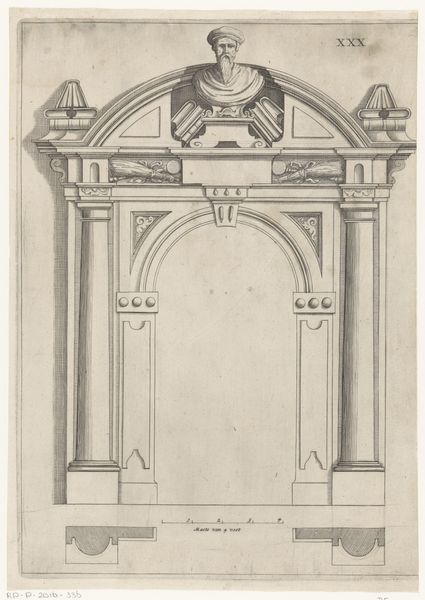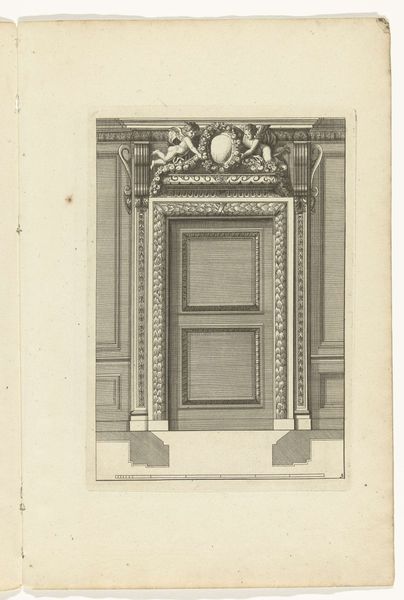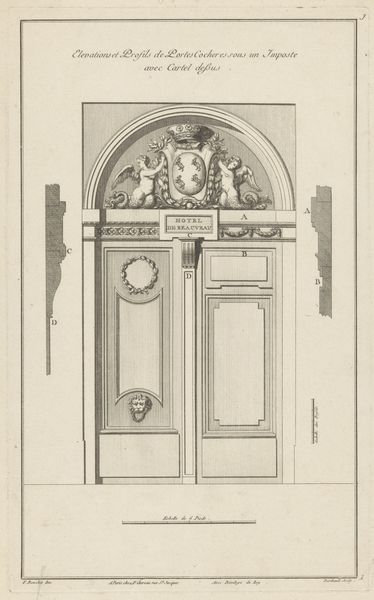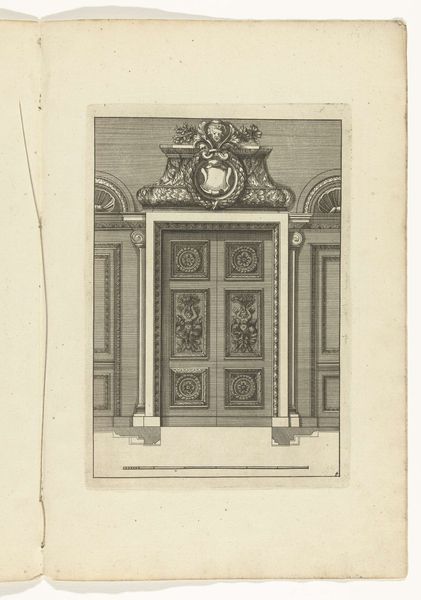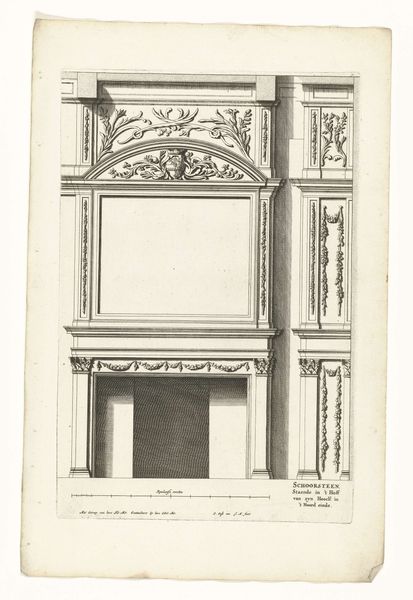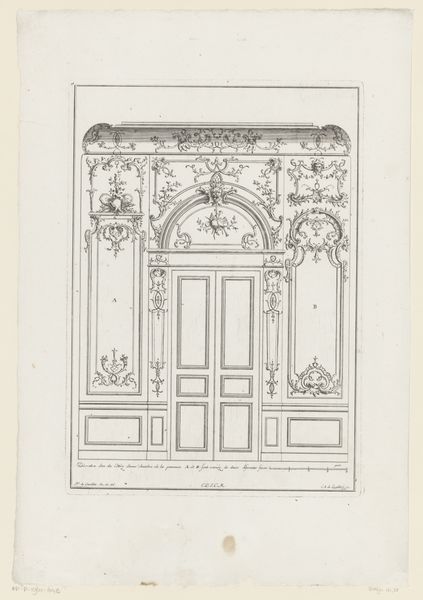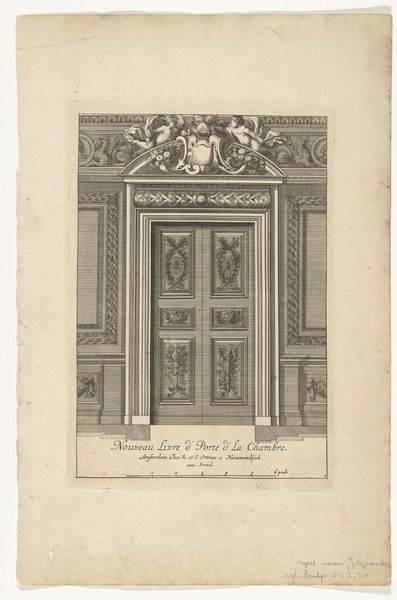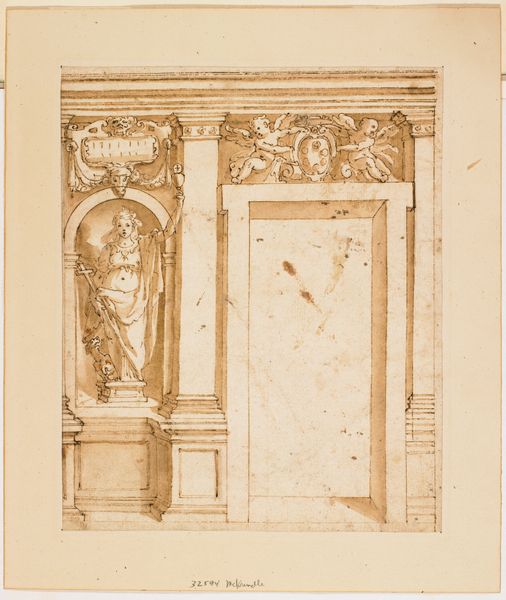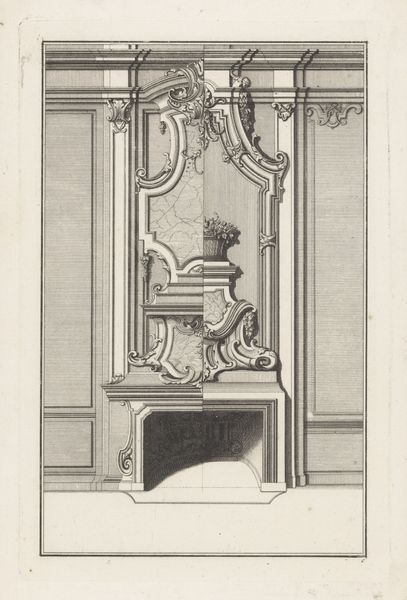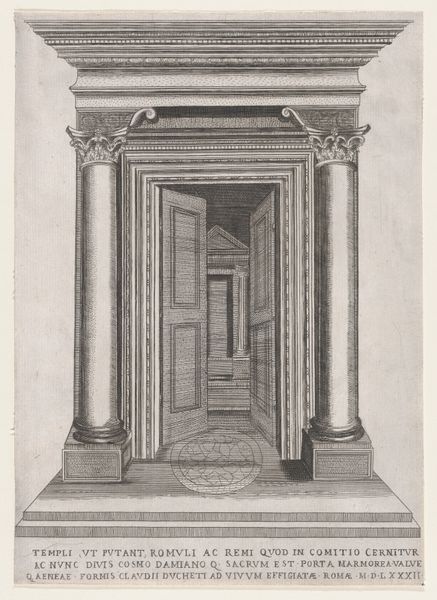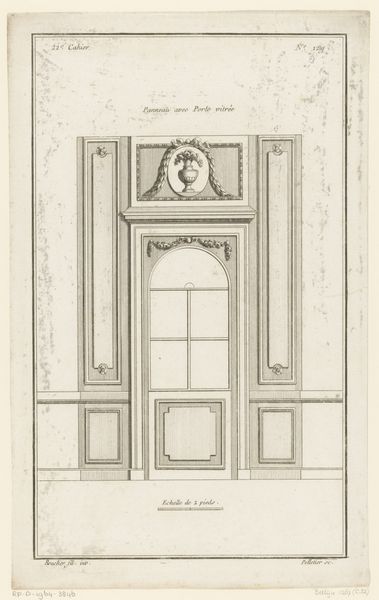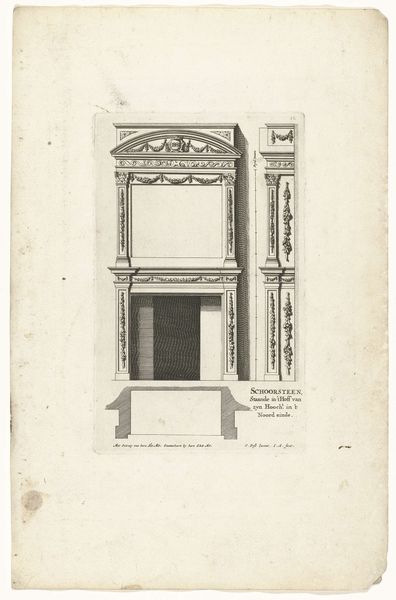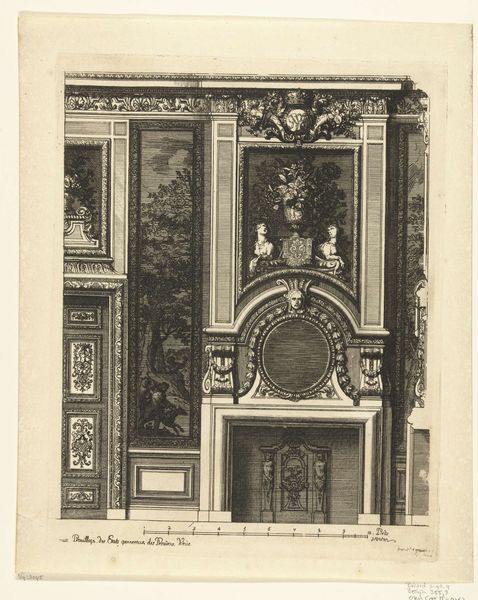
drawing, intaglio, engraving, architecture
#
drawing
#
baroque
#
intaglio
#
perspective
#
history-painting
#
engraving
#
architecture
Dimensions: height 399 mm, width 241 mm
Copyright: Rijks Museum: Open Domain
Curator: Before us is “Doorkijk van deuren,” or “View of doors,” created between 1670 and 1676 by François Chauveau. It's an intaglio print, showcasing the Baroque interest in perspective. Editor: My immediate response is one of awe. The depth achieved through a simple doorway, repeating into infinity almost, is rather striking in its geometry. There is a certain austerity and lack of visual information in its execution, which draws you into the pattern itself. Curator: Indeed. The doors evoke the absolutist power structures that were crystallizing across Europe during the late 17th century. Each successive doorway is carefully and richly decorated to create not just a feeling of architectural awe, but a subtle reinforcement of hierarchy and access. The fact that they seem to extend on forever also emphasizes the social inaccessibility for most to the center of this architecture. Editor: From a formal perspective, the print method itself, with its rigid lines and calculated use of light and shadow, augments this feeling. Consider the cold tonality of the grays, and the absence of color creates a measured, almost clinical detachment, enhancing the spatial illusion, though minimizing individual expression. Curator: Precisely, though these prints weren’t necessarily intended to have individual expression but served to reinforce the architectural power that underpinned a newly modern state. These images helped shape political realities as much as mirroring existing conditions of power. Editor: So you’re arguing its artistic value lies not solely in its aesthetics but in its power as a symbol and documentation of its socio-political background. A formal reading does inevitably lead one to this line of interpretation. I cannot imagine that I would feel the same had this been made by different hands. Curator: A final point to keep in mind: works like Chauveau’s also shaped how spaces were perceived in that period—how spaces might enforce distance but also performatively demonstrate majesty and seemingly endless possibilities. Editor: A fascinating dialogue of design and its function as political stagecraft, truly! Thanks to you for your wonderful thoughts. Curator: Indeed. Thank you for helping us explore this unique confluence between formal and historical insights.
Comments
No comments
Be the first to comment and join the conversation on the ultimate creative platform.

